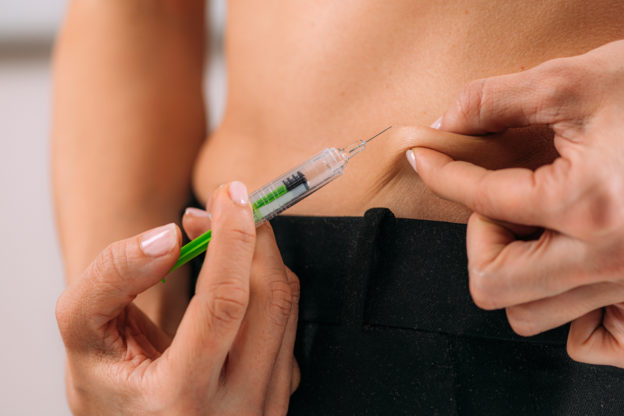IVF injections, and other relating therapies, within an infertility treatment plan may fall under government and/or private IVF funding in Kitchener Waterloo, including the cost of IVF injections.
Why Are Injectable Medicines Used for IVF?
With IVF shots for infertility treatment, some medications are given in premeasured injectable forms to ensure precise timing. Injection of any form of medicine into the bloodstream has been proven to work faster and better than medication taken orally as these travel through the digestive system.
The IVF treatment involves taking daily injections that are available to be done in the privacy of one’s home.
Types of IVF Injections
IVF injections for pregnancy include varying medications that are often combined, depending on the condition of the person’s infertility.
Subcutaneous Injections
Subcutaneous injections target the area beneath the skin surface and usually are done in the stomach or front thigh. Most of the injectable medications prescribed are performed as subcutaneous injections.Intramuscular Injections
Intramuscular injections are designed to deliver the prescribed medication directly into the muscle. IVF treatments with progesterone in oil and the hCG “trigger” shot are often given as an intramuscular injection. The shot is commonly injected into the top outer quadrant of the buttocks.How Many Shots Do You Need During IVF?
As with any form of infertility treatment, the length of time or number of doses of medication involved depends on the individual and the type of required treatment. Based on a number of relating factors, IVF treatments can see up to 90 shots used within one cycle of treatment. This equates to one to two injections per day.How to Take IVF Injections at Home?
Depending on the type of IVF injection prescribed, your fertility specialists will provide you with the proper instructions. We offer a list of the most commonly used techniques below involving a pre-filled pen:- Prepare a sterile environment to place the equipment and ensure to wash your hands prior to handling the materials.
- Equipment to have on-hand includes reusable injection pen/disposable needle and syringe, alcohol swabs, sterile gauze pads and bandages, and needle disposal jar if needed.
- Select the proper settings on the injection pen or draw the medication into the syringe.
- Remove any air bubbles from the syringe by holding the needle upward and slowly push the end until a droplet appears at the tip. Recap the needle until ready for injection.
- Prepare the injection site with an alcohol swab and allow skin to dry.
- Remove the needle cap and pinch the injection site with thumb and fingers.
- Firmly hold the needle and insert into the skin.
- When completed, place a gauze pad on top of the injection site with the help of a bandage.
- Dispose of the needle in a safe container.
Tips for Taking IVF Injections at Home
During infertility treatment in Kitchener Waterloo, you will receive explicit information for safe and effective injectable medications.With time and practice, the preferred technique will be developed to lessen any discomfort or pain with the injections. As the needles are small, pinch the skin and quickly inject the skin at a 45-degree angle with a slow removal.
As with uncomfortable medical procedures, use deep breathing techniques to release any tension physically and emotionally before and during the injection. Before the insertion, take a deep breath and slowly release the breath as the needle is injected.
Inject the medication in a different site each time to reduce the risk of bruising, inflammation, and soreness. Many find one side to be more comfortable than the other.
Immediately after the injection, place an ice pack on the injection site to relieve any swelling and/or pain and discomfort.
After each injection, reward yourself with a treat, long soak, or a relaxing walk.





